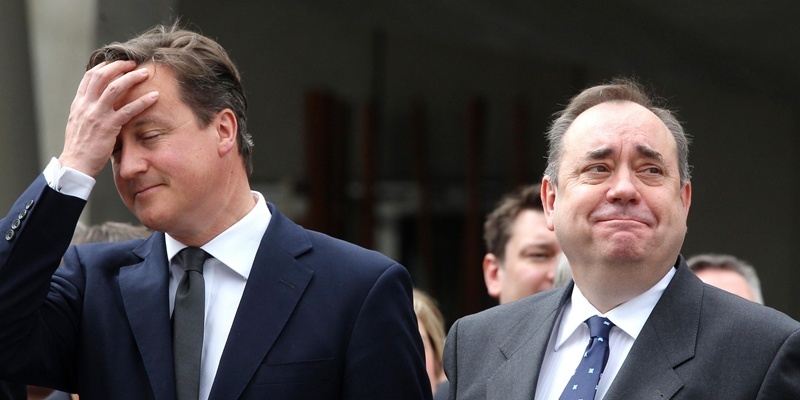David Cameron and Alex Salmond made ”little progress” over the staging of the independence referendum during their meeting on Thursday.
The Prime Minister and First Minister discussed outstanding issues about how the crunch constitutional poll should be conducted at Scottish Government headquarters in Edinburgh.
But Mr Cameron said there ”wasn’t much progress” with no movement on key subjects including the timing, the number of questions on the ballot and who will vote.
Sources close to Downing Street described the meeting as ”frustrating”.
UK ministers say the Scottish Parliament needs extra devolved powers for the referendum to be legal, and has proposed a temporary transfer.
The SNP, which says it would be entitled to hold a ”consultative” referendum, has welcomed the coalition’s offer but warned it not to ”attach strings”.
UK ministers also want the vote to be staged sooner than the SNP has proposed, and disagree with calls to let 16- and 17-year-olds vote.
But Mr Salmond insisted the main ”stumbling block” over the referendum hinged on the issue of whether there should be one or two questions put to voters.
The UK Government wants Scots to be given a straight choice between independence and staying in the United Kingdom. But Mr Salmond’s SNP administration is open to also giving voters the option of backing further powers for Holyrood, and is consulting on the option sometimes dubbed devo-max.
The First Minister said: ”The Prime Minister’s position is he wants to have one question. My position is we are in the middle of a consultation with the Scottish people and we are open-minded.
”If there is a strong demand from civic Scotland, from the unions, the voluntary sector, the churches, civic society in Scotland, for something different, for some other option to be tested, politicians at the very least should listen to that.”
And while Mr Salmond said he had not reached an agreement with Mr Cameron, he said ”things have moved on quite substantially”.
He highlighted the ”emergence that something else might be on offer on the table” and stated: ”Although there isn’t agreement I think things have moved on quite substantially.”
Anti-cuts campaigners attempted to disrupt Mr Cameron’s visit.
Around 40 protesters were surrounded police outside St Andrew’s House, where the meeting with Mr Salmond took place.
Protesters also staged a demonstration outside the Apex Hotel where Mr Cameron made his speech, with one person arrested.
A small number of protesters also demonstrated outside the Quaker Oats factory in Cupar, where Mr Cameron began his visit to Scotland.
Photo by Andrew Milligan/PA Archive
